During the COVID pandemic and the lockdown, we almost forgot about the leprosy patients
Due to the stigma attached to the disease, life is tough for the leprosy patients. But, those living in Prayagraj, Uttar Pradesh, said they haven’t got adequate medical help ever since the lockdown

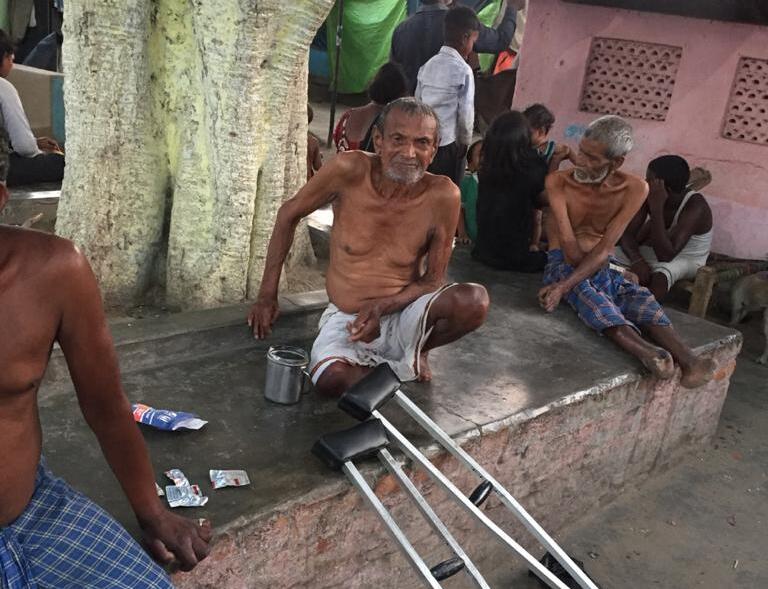
Poorest of the poor has been bearing the brunt of the lockdown and the government's apathy. Photo: Team Shuruaat
Fifty-year-old Vinay Rajat can’t sit next to a stove and make tea for himself. He can’t step out when it rains because the ulcers on the soles of his feet swell up. Vinay is a leprosy patient and has been living with this disease for the past 20 years. He lives in the Sai Baba Kusht Rogi Seva Ashram in Daraganj in Prayagraj, Uttar Pradesh.
“We get ulcers when we walk. During the rainy season, if we step out, we get swelling in our feet. We somehow manage to wear clothes and chew food. Unfortunately, this disease follows you to your grave,” said Vinay.
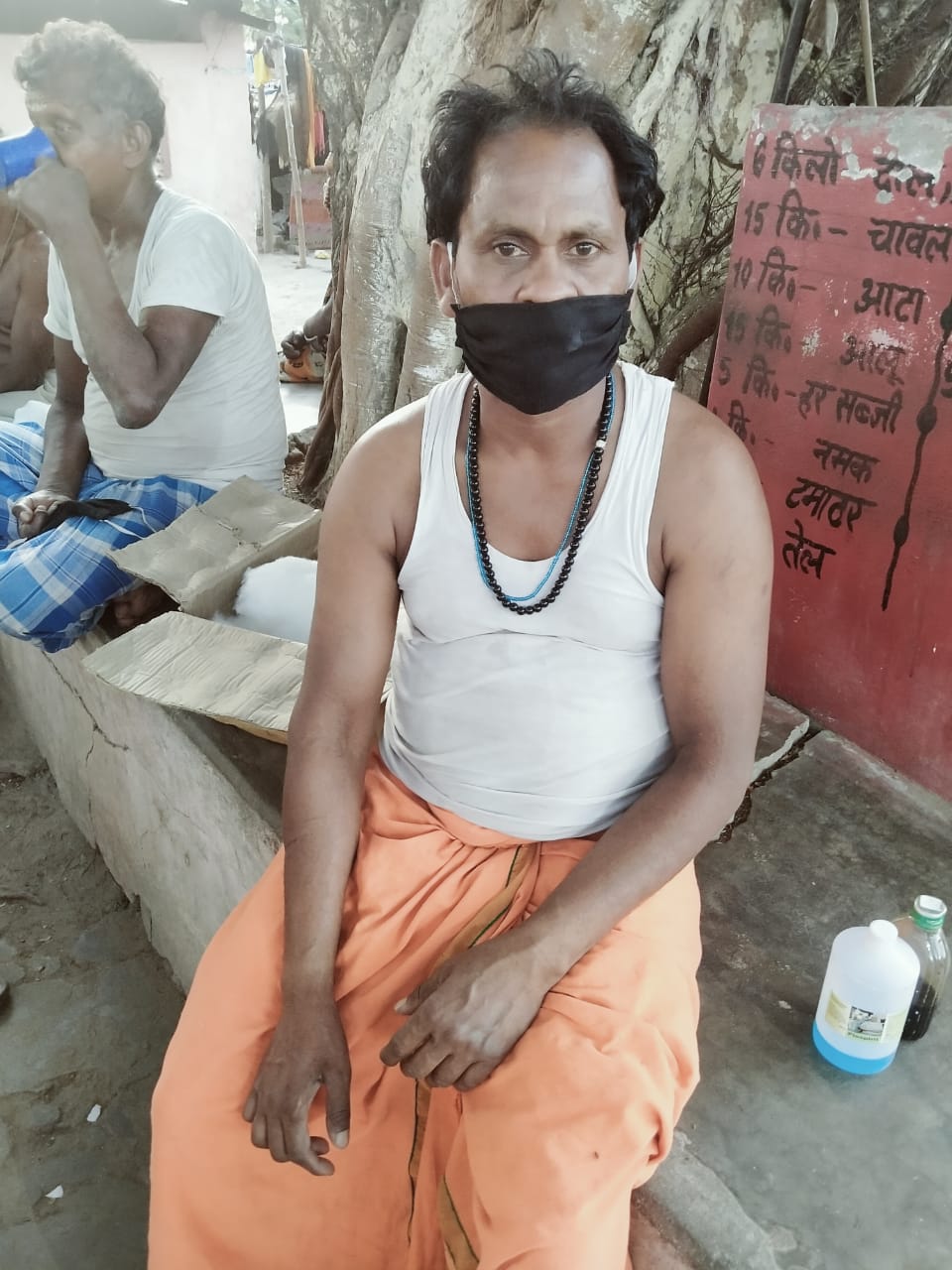
Leprosy – a contagious skin disease, can cause permanent damage to the nerves in the fingers, toes, hands and feet. Repeated injuries can cause deformities and even the loss of fingers and toes. As per the Ministry of Health & Family Welfare, under the National Leprosy Eradication Programme, there’s a provision of providing supportive medicines, dressing material, monitoring and supervision to the leprosy patients. However, when Gaon Connection contacted these patients living in Prayagraj, Uttar Pradesh, they said they haven’t been getting any help from the government and they really suffered during the lockdown.
“Earlier, the doctors would come to see us every Saturday. They would give us medicines and cotton. But they didn’t come during the lockdown. We have wounds in our hands and legs, and this is why we need to do dressing daily,” said Vinay, who has deformities in his legs.
India has always had the largest population of people suffering from leprosy. As per the report of the National Centre for Biotechnology Information, published in 2018, around three million people in India live with leprosy-related deformities.

India’s 750 “leprosy colonies” house approximately 200,000 people who usually are housed away from society because of several misconceptions regarding the disease. In many colonies, there are no toilet facilities, no drinking water or approach roads. People usually avoid dealing with these patients as a result of which they face issues in accessing public transport. This happens in the usual scenario. Surviving the lockdown has been especially tough for them.
Like Vinay, there are 23 other patients who have been living in Sai Baba Kusht Rogi Seva Ashram for many years. Some are in their mid-50s, some in the mid-60s. Some have been living with this disease for the past 20 years, some 25 years, and some for as long as 40 years. Over the years, they have developed deformities in hands and legs.
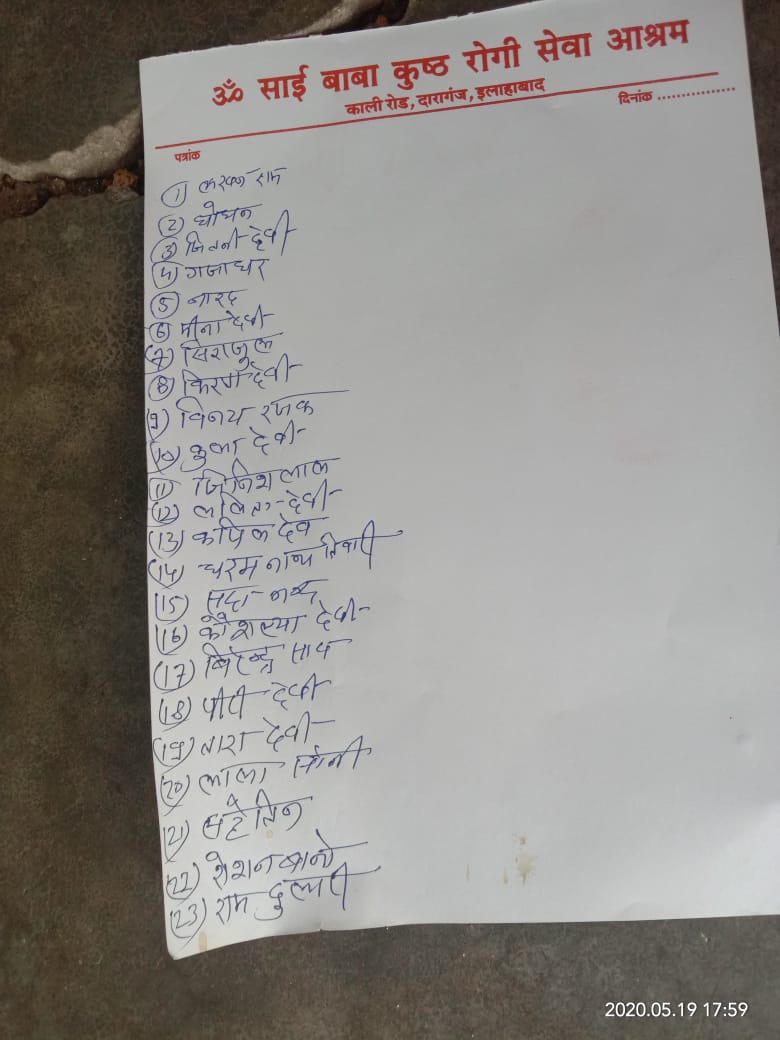
“Some are fully cured, but they bear the residual effect of the disease in some form of physical deformity. In leprosy, the disease attacks the nervous system of the patient. While walking or working, patients don’t feel the injury, this leads to them sustaining injuries which lead to deformities. We call these patients ‘survivors of leprosy’,” said Santosh Rathod, member, special interest group, the Indian Association of Dermatologists, Venereologists and Leprologists (IADVL).
Talking about the unavailability of dressing material for these patients, Santosh said: “If the patients develop a wound or an ulcer, then they need daily dressings until the wound heals. If they don’t, the wound gets more severe.”
“The government and the health workforce are completely focused on COVID right now. Hardly anyone is concerned about the leprosy patients,” said Abhishek Shukla, the founder of Shuruaat Ek Jyoti Asha ki, a non-profit organisation based in Prayagraj that has been imparting education to children living in slums and on streets for over three years.
Abhishek, along with his team members, has distributed medicines and dressing material to these patients during the lockdown. “We provide antibiotics, paracetamol, tubes, spirit, bandage and cotton to these patients,” informed Abhishek. It costs him Rs 500 per patient per kit that lasts for 15 days.
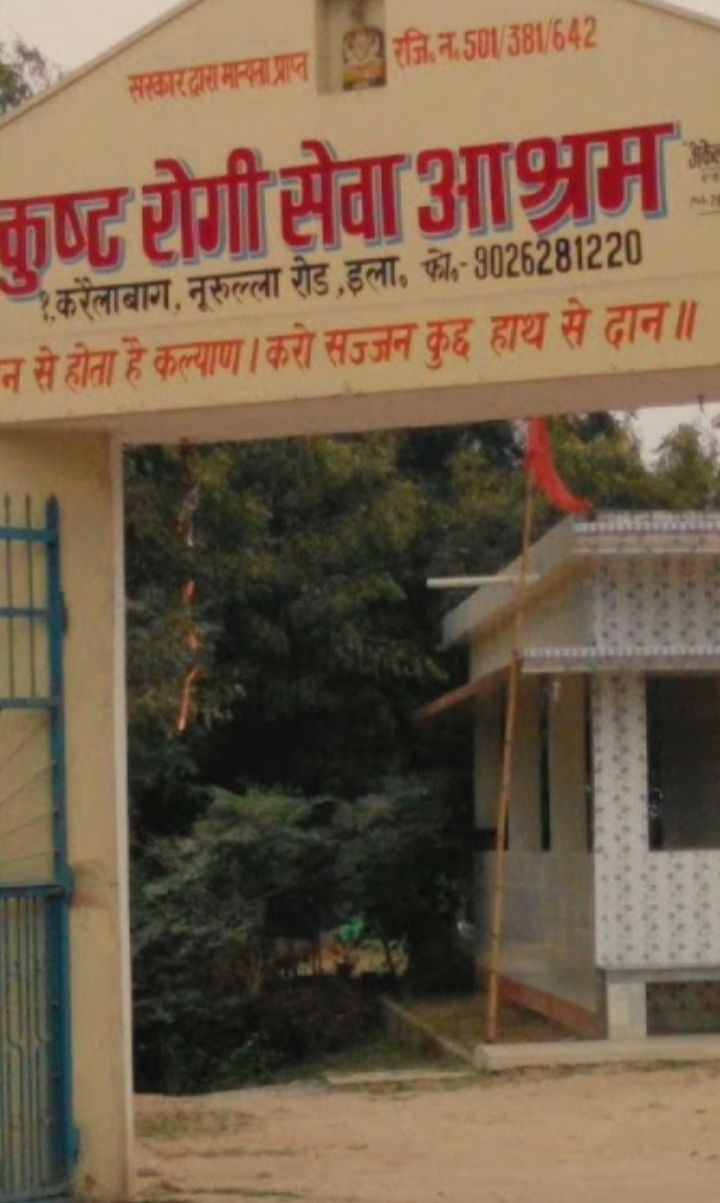
He informed Gaon Connection that besides these 23-patients in Daraganj ashram, there are around 50 patients in the Karailbagh area who have not been getting essential medicines since the lockdown. Moreover, there are many such ashrams in kodikhana, Paraed road in the Sangam area in Prayagraj, where many patients are living with discomfort as they struggle to get daily dressing material. There are many places where the situation is even worse.
Abhishek and his team have been helping around 70 such patients with the dressing material as the government isn’t doing its bit.
But when Gaon Connection spoke to Dr V Shekher, the district leprosy officer, Prayagraj, he said: “We have been providing bandage, cotton, savlon as well as lotion to the leprosy-handicapped patients living in our leprosy colonies.”
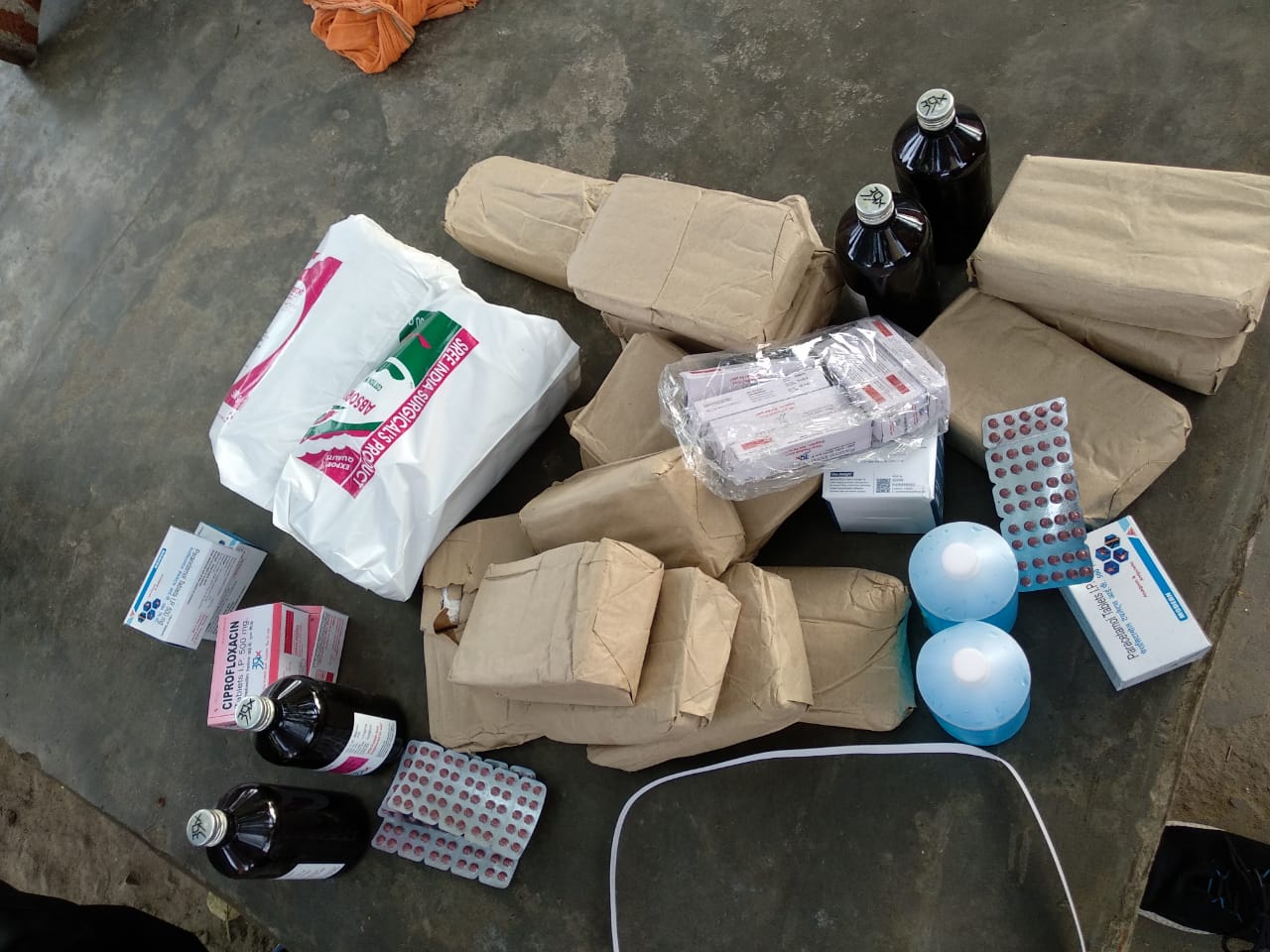
When we informed him about the patients in the Daraganj ashram, he denied the fact they are not getting the dressing material. Instead, he said that specialists have been visiting these patients once or twice a month. According to the district officer, the services have remained unaffected even during the lockdown.
“Only 10-20% of the work is happening on the ground. The government should have been doing what we are doing right now. Had they been doing their job, there was no need for people like us to step up during this pandemic,” said Abhishek. He added. “These patients suffer even otherwise; the lockdown has just worsened their plight. There are many patients in other areas who are in urgent need of help.”
An officer from the Leprosy Trust of India (TLM), a community hospital for leprosy patients in Naini in Prayagraj, said on the condition of anonymity, “These patients from Daraganj were treated at this hospital. Most of them have recovered now. But if they have ulcers, then they are most welcome to come here and get the treatment. We can’t go there.”
According to the officer the distance between the hospital and the ashram is nearly 3 kms. However, Abhishek informed us that the hospital is around 7 kms from that ashram.
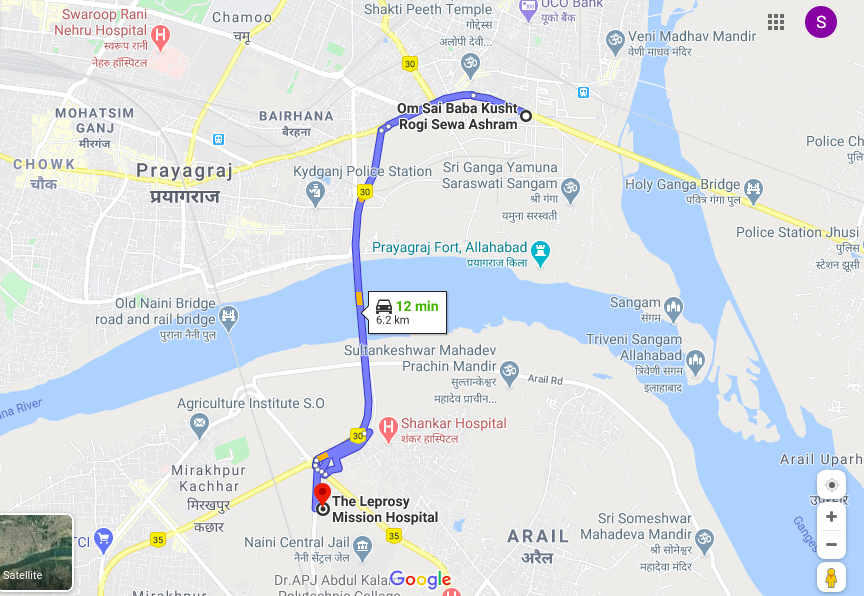
“How can they commute when they have deformities in their legs?” asked Abhishek. “They can’t afford to visit the hospitals themselves. They have wounds in their legs. They keep sustaining injuries,” he added.
The officer from the leprosy mission trust informed us that they distributed dry ration, including flour, rice, soap, potatoes, onions in April. When asked if help was provided to them thereafter, the officer replied: “We are doing this depending on the funds that we get. Our work has also suffered. We were getting funds from the general OPDs. When the OPDs are not functioning, how do we manage the expenses?” Although the government is distributing ration to these patients, they need urgent medical help.
The officer also informed us that as of now the hospital is closed and they haven’t got the permission to work. “We are there for the people affected by leprosy, just that we need to get permission to work. We are the only hospital here working for leprosy patients. We are supposed to be the biggest hospital for leprosy care in the state, and across the country, but we are not open. We were not given permission to work during the lockdown,” said the TLM community officer, adding: “We will work as soon as we get the permission.”

“As emergency medical facilities are open everywhere, only a few patients would not be receiving treatment. All the departments are functioning. Generally, these leprosy patients get medical care at the primary health centres in villages,” said Santosh, who has been working for leprosy patients for the past 15 years.
He added: “Not just these patients, the others have suffered too as the health workers are busy handling COVID cases.”
The only source of income for these patients is the Rs 2,500/- that they get as pension from the government. They can’t afford to buy dressing material with this considering they also have families to look after. “Earlier, we would get some money near the Ganga ghat. People would offer us flour and rice,” said Vinay.
“We are bhikshudhari (beggars). Our hands and legs don’t function. We can’t do labour jobs. We can’t step out to work. We are somehow managing and surviving this pandemic,” added Vinay.

